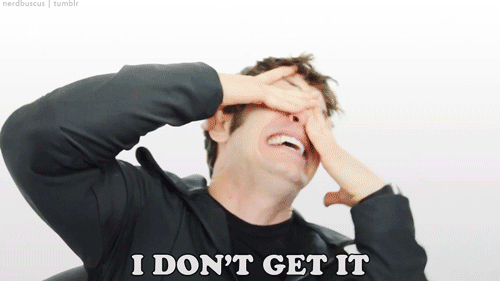A couple of days ago, on a list I follow, someone posted a link to “Just what am I looking at?” from the Distant Librarian. The person was wondering if anyone had any ideas about how to “unflatten” the online world for students. It reminded me of an article Barbara Fister wrote called Rebundling the Unbundled Article. A recent Project Information Literacy report – How Freshmen Conduct Research Once They Enter College – find that “many freshmen were unfamiliar with the formats of scholarly publications before entering college.” When you add in the challenge of everything appearing on a computer screen, things get complicated.
In response to the message, I shared the following in response (my version here is significantly edited, because blog post = editing, while email reply = less editing.) This is by no means a unique or novel exercise, but sometimes reading someone else’s take on common activity will spur you to try something a little differently next time. With that, enjoy!
One of my colleagues demonstrated this activity in her interview. I have adapted it for several 100-level first-year writing courses, where students struggle to understand how various sources differ.
Identifying Types of Sources – A Hands-On Exercise
materials needed:
- 4-5 copies each of a scholarly journal, a trade publication, and a popular magazine* related to the course topic (depending on class size, you may need more)
- handout describing the different types of sources (see any of these web pages for inspiration)
- in-class worksheets
- access to computers
- whiteboard
Students brainstorm on the whiteboard about the kinds of sources they’ve used in the past; the list usually includes web pages, books, scholarly articles, movies, and magazines. I explain that in the realm of “articles” there’s a lot more diversity than meets the eye, and learning to discern what’s what isn’t a something we spring forth from the womb knowing how to do.
The students break into groups of 3. Each group gets one of each type of print source and a worksheet. Each student gets a copy of the handout describing different types of sources. The students examine each item and look for clues to help them identify its type. We typically work for about 15 minutes on this part. I encourage the students to fill out the worksheet.
After 15 minutes, each group reports out on one item. They tell the class what they thought it was, and why. The rest of the class agrees or disagrees with them, and provides reasons why. Each of the report-outs takes about 2 minutes. Students tend to do pretty well identifying the scholarly journal and popular magazine, but struggle a lot more with the trade publications. They tend to have a lot of good conversations during the reporting-out.
At that point, the students always appear to have a lot of confidence about what they’ve just done (with good reason!), so I throw them the following questions:
- Where do you normally find materials for your papers? (Cue the chorus of “online!”)
- How do you figure out what kinds of materials you’re working with online?
There’s usually a moment of hesitation (unbearably long, no matter how short it might actually be), and then someone will say “could we try using the clues we just used for the print sources?”
And so we do! In small groups, the students use our discovery layer to identify an item on a topic of interest. With an item on-screen, they answer the following question:
Is this a scholarly, popular, or trade source? List at least 3 items from your handout which help you make that claim. Are there clues not on the handout which also help you determine what kind of source this is? List those too.
We come back together as a group to report out again, and it’s AMAZING how quickly and easily the students are able to accurately describe the what their online items are. The clues from the handout are helpful, but I’m always surprised at how many students use the search facets in our discovery layer to limit items to different types of sources as well without any prompting from me or their professor. In classes where we haven’t done this kind of exercise, the students rarely notice the discovery layer facets (even when they might be really useful.)
Outcomes
I did this exercise twice in classes last spring. I ended up meeting with many of the students in the classes after our instruction session as they tackled their research projects. All of those students were able to describe what they’d already found in the language they learned in class, and were able to say, “I’m looking for more popular sources” or “The scholarly sources I found were too complex for me to understand with my current level of knowledge. How can I find scholarly sources that aren’t so complex?” I count both of these reactions as anecdotal evidence that the students learned in our sessions. The fact that the professor reported back to me that the students asked her fewer source-type questions AND wrote papers that fulfilled her requirements around types of sources is the other piece of evidence I use to point to this as a useful exercise to adopt in classes where students struggle with understanding how to contextualize sources they find online.

* This can be really hard in some academic libraries! For one class I actually went to a bookstore and purchased 3 popular environmental sciences/spirituality magazines last spring because we just didn’t have anything like that in our collection – or our staff lounge! – in print.
